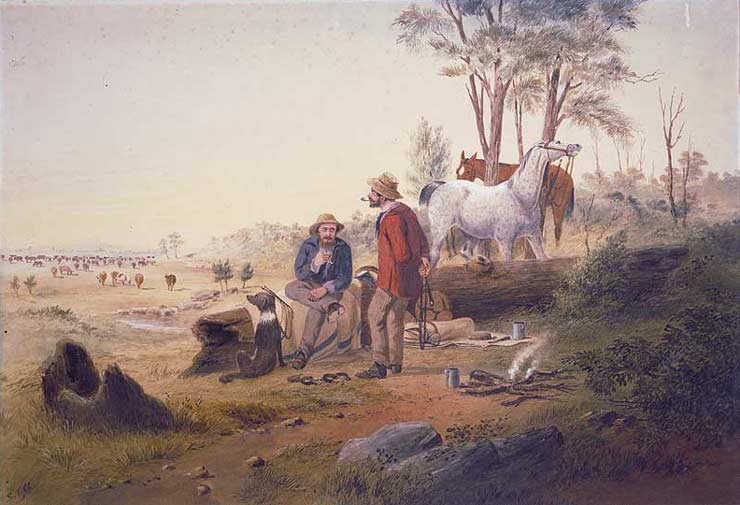 Drovers and their horses resting, c1850
Drovers and their horses resting, c1850
TLF ID R3379
This is a watercolour, measuring 44 cm x 64 cm, by the famous colonial artist Samuel Thomas Gill (1818-80). It shows two drovers camped next to a fallen tree, with their horses tethered and at rest behind them. One of the drovers and a dog remain vigilant, looking towards cattle that are spread out on a wide plain below, and to the left, of the campsite. The watercolour dates from around 1850 and has the artist's initials, 'STG', in the bottom left-hand corner.
